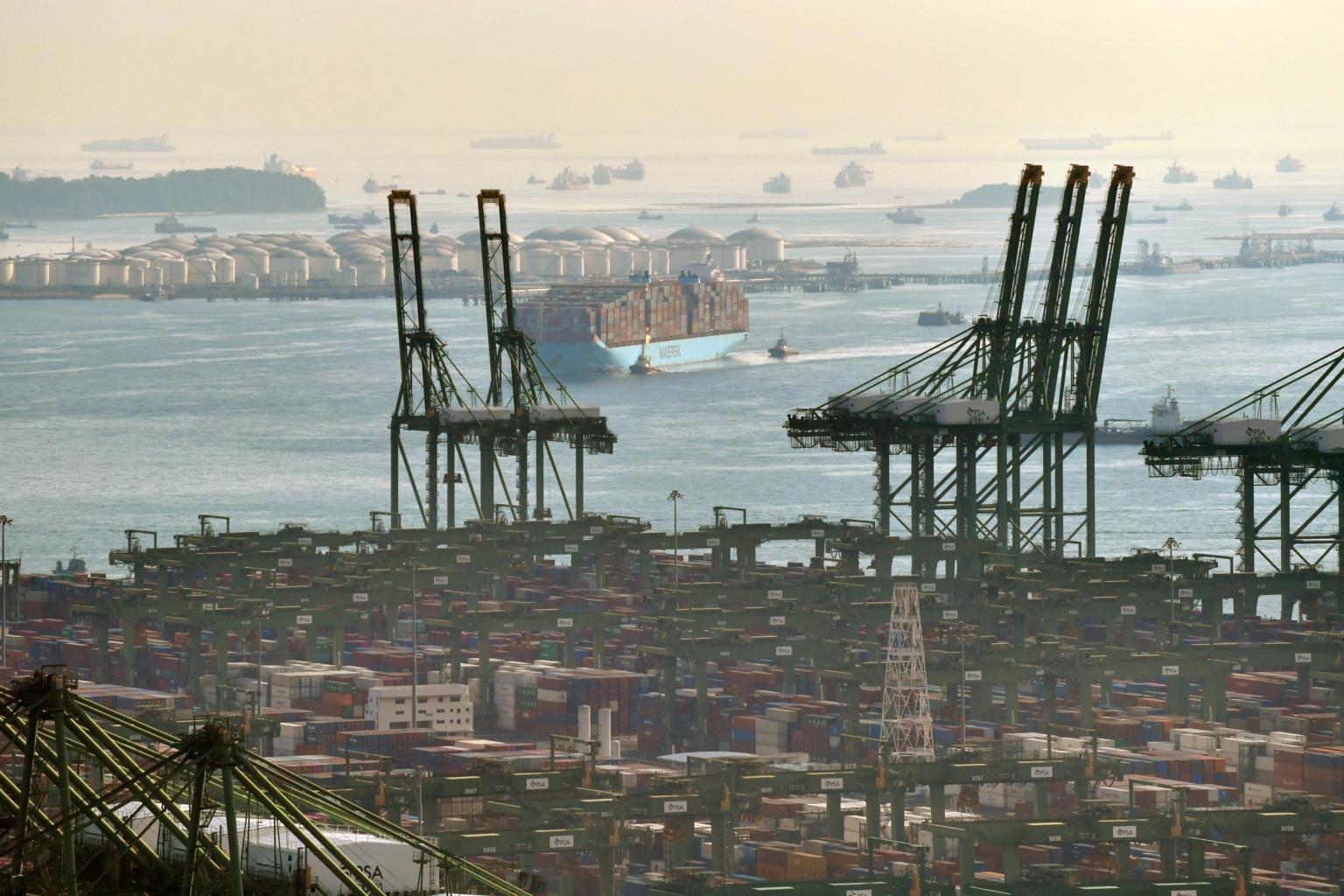Singapore non-oil export growth slows to 7.7% in March but beats forecasts
Sign up now: Get ST's newsletters delivered to your inbox

Shipments were largely bolstered by growth in integrated circuits, disk drives and personal computers.
ST PHOTO: ALPHONSUS CHERN
Follow topic:
SINGAPORE - Singapore’s key shipments grew for the 16th straight month in March, though the rate of growth continued to cool amid uncertainties from the ongoing conflict between Russia and Ukraine.
Non-oil domestic exports (Nodx) rose 7.7 per cent year on year last month, slowing from the revised 9.4 per cent growth in February and 17.6 per cent increase in January, according to data released by Enterprise Singapore (ESG) on Monday (April 18).
March's Nodx growth was nonetheless much above the 1.7 per cent average estimate of analysts polled by Bloomberg.
Electronic Nodx grew 11.5 per cent last month, slightly lower than the 11.6 per cent year-on-year rise in February. Shipments were largely bolstered by growth in integrated circuits, disk drives and personal computers.
Non-electronic Nodx increased by 6.8 per cent in March, cooling from the 8.8 per cent growth the month before, with non-monetary gold, pharmaceuticals and measuring instruments the largest contributors to growth.
Analysts cautioned that challenges such as continued supply chain disruptions may dampen trade in the coming months.
Maybank economists Chua Hak Bin and Lee Ju Ye said exports continue to be driven and flattered by higher prices rather than volumes.
Real Nodx based on 2018 prices contracted for the second straight month by 3.4 per cent, compared with February’s 1.6 per cent decline, reflecting manufacturing capacity limits and supply disruptions, they said.
“The negative real export growth suggests that industrial production may pull back sharply in March from the highs in February,” they added.
Ms Selena Ling, OCBC Bank’s chief economist and head of treasury research and strategy, said Monday’s figures brought Nodx growth in the first quarter of 2022 to 11.4 per cent year on year, up from 9.6 per cent a year ago, despite the Omicron surge earlier this year.
“This suggests that Nodx growth is off to a good start despite the twin headwinds of inflation exacerbated by global supply chain bottlenecks that are partly due to the Ukraine war, as well as the likely slowdown in China’s demand given the current Covid-19-related lockdowns,” she said.
She said the impact of the China lockdowns in late March on consumption and domestic supply chains will be felt more clearly from this month.
Singapore’s Nodx growth momentum in the second quarter is likely to moderate to 7.9 per cent year on year, with electronics exports slowing, she added.
“A degree of caution may be warranted in the coming months due to the Ukraine-Russian conflict, which could disrupt many global supply chains due to the energy, commodity and food products produced and exported by these two countries, in addition to driving inflation higher for longer,” said Ms Ling.
On a month-on-month seasonally adjusted basis, Nodx dipped 2.3 per cent in March, following the previous month’s 2.9 per cent decline. This was due to a drop in non-electronic exports, despite growth in electronic shipments.
Nodx reached $17.2 billion in March, lower than the previous month’s $17.6 billion.
ESG said shipments to the top 10 markets as a whole rose last month, although exports to Hong Kong, South Korea and Thailand declined. The largest contributors to the growth in Nodx were the United States (plus 68.1 per cent), Malaysia (plus 29.1 per cent) and the European Union (plus 16.8 per cent).

Oil domestic exports rose 39.2 per cent last month, moderating from the 62 per cent growth in February. This was driven by higher exports to Malaysia, Australia and Indonesia. However, going by volume, such exports fell 19.1 per cent after a 6.4 per cent increase in February.
On the whole, total trade expanded 17.6 per cent year on year in March, following the 20.9 per cent expansion in February.
This was driven by a 13.9 per cent growth in total exports, and a 21.9 per cent rise in total imports.
Oxford Economics analysts Priyanka Kishore and Sung-Eun Jung noted that adjusting for prices, real total exports contracted 1.1 per cent year on year in March after growing 7.9 per cent in February.
They said: “The sharp drop in momentum for real exports reflects weakening global trade and growth. Ongoing supply chain disruptions pose further challenges to trade, with China’s continued zero-Covid-19 approach adding to logistical challenges. We expect export momentum to remain on a weak footing in Q2 as well.”

